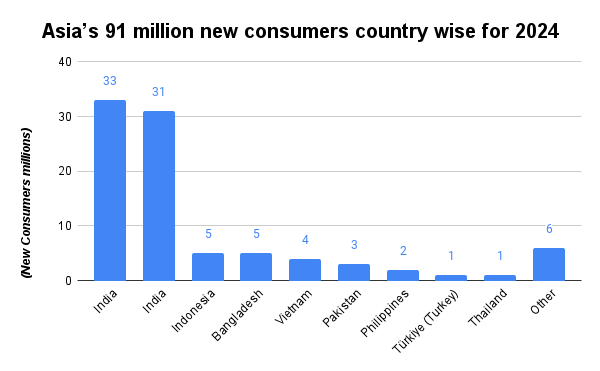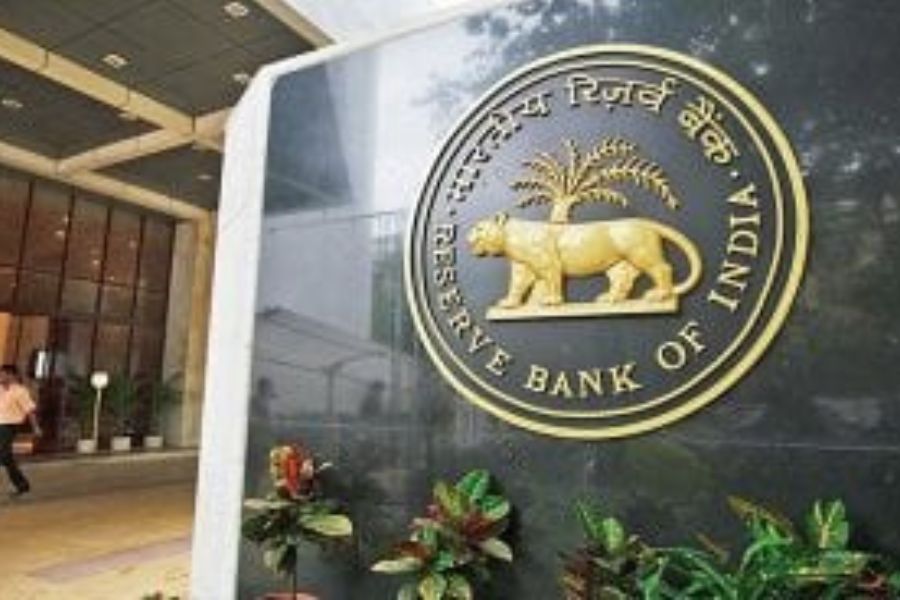Rising Middle Class: Asia and Africa lead the way
In 2024, an estimated 113 million people are projected to join the global middle class, primarily driven by Asia, where 91 million new consumers are expected to emerge. Notably, India and China lead the way due to their vast populations, rising incomes, and urbanization. Indonesia and Bangladesh also play a significant role in their youthful demographics. Africa, with Egypt and Nigeria as front-runners, contributes 10 million new consumers.
Defined by the World Data Lab as someone who spends at least US$ 12 per day (measured in 2017 purchasing power parity), these individuals are typically rising in developing regions like Asia and Africa.

Image Credit: Pixabay
In 2024, a significant economic transformation is underway, with an estimated 113 million individuals ascending into the global middle class. Asia and Africa play pivotal roles in driving this shift. Asia, primarily led by China and India due to their massive populations, rising incomes, and urbanization, is expected to contribute 91 million new consumers. Indonesia and Bangladesh, with their youthful demographics, are also significant contributors. Notably, Asia’s growing middle class is closely tied to the rapid expansion of e-commerce markets.
Where are millions of new consumers coming from?
World Data Lab expects 113 million people to join the global middle class in 2024, with the vast majority coming from Asia.
- Asia: 91 million
- Africa: 10 million
- Latin America: 6 million
- Rest of the World: 5 million
Asia is the primary driver of global middle-class expansion in 2024, contributing a staggering 81% of new consumers. Asia, where the majority of the 91 million new consumers in 2024 are expected to emerge.
Asia’s 91 million new consumers for 2024, by country

Source: Visual capitalists
It’s not surprising that China and India top the list. Both countries have massive populations, rising income levels, and high rates of urbanization. These factors are propelling their residents into the middle class.
Further down the list, we see Indonesia and Bangladesh adding 5 million consumers each. What sets them apart is their expansive population pyramid, indicating a relatively young average age and growing labour force. These demographics are a significant driver of economic growth.
Interestingly, countries like Vietnam, the Philippines, and Thailand also make the list, and they are among the fastest-growing e-commerce markets globally. The digital age is playing a pivotal role in their economic development.
Highlights from Africa
Africa is also making a significant contribution to the growth of the global middle class, with Egypt and Nigeria leading the way.
| Country | New Consumers (millions) |
| Egypt | 2 |
| Nigeria | 1 |
| Other African countries | 7 |
Source: Visual capitalists
Egypt and Nigeria are characterized by their high growth potential and above-average birth rates. Looking ahead, Goldman Sachs believes that by 2075, Egypt and Nigeria could become the fifth and seventh largest economies globally, surpassing traditional economic leaders like Japan, Germany, and the UK.
Implications of middle-class growth
The expansion of the global middle class has far-reaching implications. As more people move into this income bracket, there is increased demand for a wide range of goods and services. This not only benefits the economies of the countries where middle-class growth is occurring but also has a significant impact on international trade, business opportunities, and global economic dynamics.
Furthermore, as these regions experience economic growth, there is the potential for improved living standards, greater access to education and healthcare, and increased political stability. The rise of the global middle class is a positive indicator of progress, although it also brings challenges such as environmental sustainability and equitable wealth distribution that must be addressed.
India’s middle-class growth and economic shift
A report from People Research on India’s Consumer Economy (PRICE) and India’s Citizen Environment suggests that India’s middle class is on the cusp of significant expansion, nearly doubling to encompass 61% of the total population by 2047, a remarkable increase from the 31% it represented in 2020-21. This projected growth is attributed to the country’s ongoing political stability and economic reforms, fueled by an anticipated annual growth rate of 6% to 7% over the next 25 years, positioning India as one of the world’s most extensive consumer markets.
The middle class is expected to increase from 432 million individuals in 2020-21 to 715 million (equating to 47% of the population) in 2030-31, and then an even more substantial 1.02 billion out of a projected population of 1.66 billion by 2047. The middle class, as defined by the think tank, consists of that earning between US$1,322.77 (Rs. 1.09 lakh) and US$7,839.51 (Rs. 6.46 lakh) per year in 2020-21 pricing, or US$6,067.74 (Rs. 5 lakh) to US$36,406.41 (Rs. 30 lakh) annually in household terms.
According to Mr. Amitabh Kant, former NITI Aayog Chief Executive Officer, this surge in middle-class households will create a heightened demand for high-quality consumer products, housing, education, and healthcare. He emphasizes the necessity for the government to focus on both job creation and opportunities in education and health, given India’s aspirations to attain full development by 2047. This transformation will also reshape the country’s demographic structure from a pyramid, with a small affluent class and a sizable low-income group, into a diamond shape.
Furthermore, the report predicts a substantial increase in the number of super-rich households in India between now and 2030-31, with much of this growth stemming from rural areas. The western region of India, especially Maharashtra, leads in terms of super-rich households, with Maharashtra alone home to 648,000 such households. Middle-class households are projected to outspend poor households by a factor of eight, while affluent households are expected to outspend the less fortunate by nearly 25 times. This transition is poised to have a profound impact on India’s economy and societal structure in the years to come.
Conclusion
The ongoing expansion of the global middle class, with 113 million new entrants in 2024, is a testament to the remarkable economic progress happening in many parts of the world. Asia is at the forefront of this transformation, driven by countries like China and India.
India’s middle class is on the brink of remarkable growth, projected to double to 61% of the total population by 2047, from 31% in 2020-21. This transformation is underpinned by political stability, economic reforms, and an expected annual growth rate of 6% to 7% over the next 25 years.
The rise of this middle class is expected to fuel demand for high-quality consumer products, housing, education, and healthcare, driving India’s economic development. The demographic shift from a pyramid to a diamond shape and the rise of super-rich households, particularly in rural areas, indicate a substantial change in India’s economic landscape. As India strives to become a fully developed nation by 2047, the growing middle class is poised to be a key driver of its economic story, albeit accompanied by challenges related to equitable wealth distribution and sustainability.













Leave a comment